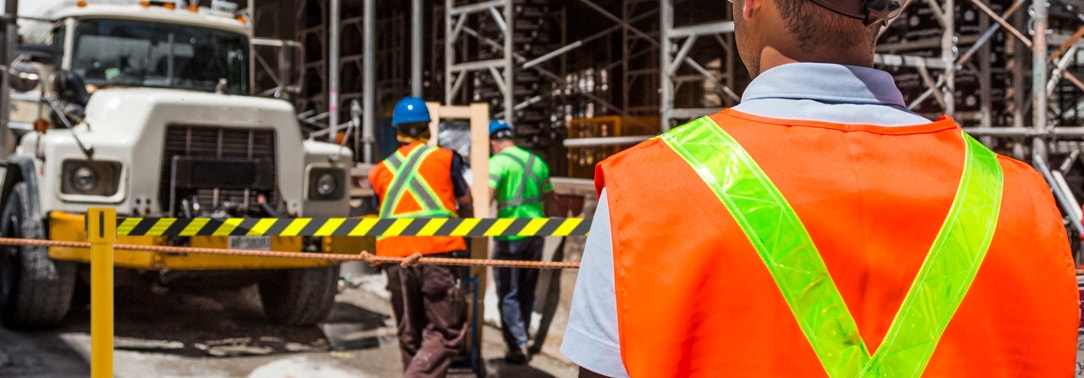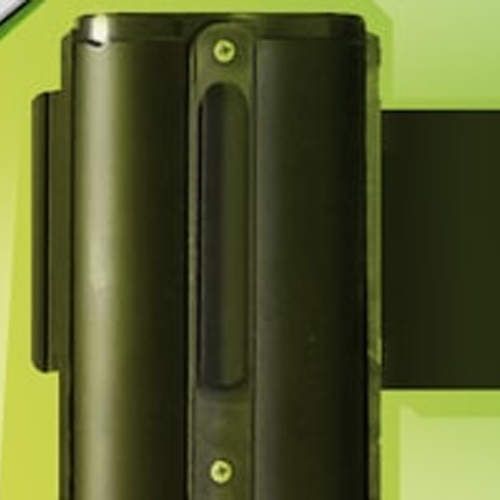
Table of Contents
Stanchion Definition, what are stanchions?
What are Stanchions and what are their uses? What is a stanchion post.
If you have ever stood in line, then you have almost certainly been standing between a line of stanchions. The correct definition of the word stanchion is an upright bar or post such as a support for a railing. However, the term is commonly used to describe the various form of barriers used to create customer queues (waiting lines). The two basic types are rope barriers and retracting belt barriers.
Retracting belts barriers are a common site in public areas where people must wait for service. Retail stores, airports, banks and amusement parks are just some of the venues that typically use large numbers belt barriers. Some stanchions have stanchion mounted signage or messaging. Never really noticed in our daily lives, once you become aware of belt barriers you will see them everywhere people stand in line!
Stanchion Meaning – Main Uses
Belt barriers serve many purposes other than just guiding customers standing in line. One key aspect of the queueing barrier that is often overlooked is that in many situations it is an important safety device. In venues that handle large crowds such as stadiums, arenas and retail stores during annual sales, the ability to feed customers into the venue in a measured, orderly way prevents the risk of crowds surging and causing a dangerous crush.
In addition to guiding customers belt barrier provide several other added value services. The belts are often printed with company logos to promote brand awareness, signage can be attached to the barrier to provide information and accessories can be added to turn the barrier into a merchandizing fixture.
SWhat is a Stanchion? Safety Belt Barriers

People often ask “What is a Stanchion?”, and often overlook what the purpose of a stanchion is. Some of the primary uses for retracting belt barriers are as industrial safety barriers. Here you will see stanchions restricting access on construction sites, maintenance areas, factories, warehouses and other work areas. Typically seen in bright safety colors like yellow or orange belt barriers used for these applications stanchions in construction often have safety warnings printed on the belts to show the nature of the hazard or to make the keep out message clear. Construction stanchions constructed for worksites in mind are a superior solution for worksites.
What is a Stanchion – Stanchion Set Up
For queuing applications, the typical set up is a zig zag or ‘snake’ that is correctly called a queueing corral. The layout should be designed so that the entrance is obvious, and the width of the lanes be set at around 3ft to cause customers to stand in single file to prevent ‘queue jumping’. Signage should be used to indicate the entrance and to tell customer what to do at the head of the queue, often a “Please Wait Here” sign.
With safety applications the stanchion is used as a barrier often in long straight runs. Here the set up is determined by the shape of the area to be protected. Safety barriers are often set up and taken down frequently so barriers with extra lengths belts are useful to reduce the number of barriers that must be handled.
The Added Value of Stanchions
The true value of the humble queueing stanchion is often overlooked. By organizing waiting customers, the stanchion speeds customer flow, improves the customer experience by removing the stress of being ‘queue jumped’ and makes more efficient use of space. But the real value of the stanchion is to unleash the retail potential of the waiting line. Because customers are idle in the queue they are more likely to interact with merchandise that is offered.
Experience has proven that items merchandized in the queue will experience a 35-50% uplift in sales. Slatwall panels can be fitted between the stanchions that support a wide range of merchandising fixtures, shelves, hooks, baskets and bowls. It is simple and cost effective to turn the queue into a retail environment so that ‘ded’ queuing space can generate additional revenue.


The brilliantly simple idea of putting a car seat belt mechanism on top of a post and then joining the belts up to form a barrier was first conceived in the UK in the mid 70s. Since that time the crowd control stanchion has become the standard product for forming waiting lines and can be seen in every type of public venue around the world.
Although the basic concept of the belt stanchion remains unchanged, today there are dozens of brands and hundreds of models to choose from. So how do you decide which option best suits your needs? There are a few simple steps in the decision making process that will take you to the right decision.
Economy or Premium
The first cut in the stanchion selection process is to decide whether to opt for an economy or premium model.
The base on an economy stanchion is a shell of galvanized steel filled with concrete. While this is a perfectly good solution for providing weight at the foot of the post to give stability the rim on this base type is likely to dent if the stanchion is dropped and that causes the stanchion to wobble.
Spare parts are not typically available on economy models so if this happens the whole stanchion has to be replaced. Premium stanchions have cast iron bases that are virtually indestructible. So, although the economy model will have a lower purchase cost it will also have a shorter service life.
A good quality economy stanchion is a perfectly acceptable choice if the stanchions are not going to be moved and will be used with light pedestrian traffic. But in heavy traffic areas or where the stanchions are moved to clean floors or change the queue layout a premium model gives a better return on your investment.
How Many Belts
Most stanchions have one belt and that is perfectly sufficient to guide customers in to forming an orderly waiting line. However, in some circumstances, twin belt stanchions are a better option and may actually be required.
The primary purpose of a second belt, set in the middle of the stanchion, is to discourage customers from ducking under the belt. For many public venues compliance with the Americans with Disabilities Act is important.
Single belt stanchions do not comply with ADA, but twin belts do as the lower belt can be detected by the visually impaired using a cane.
Recently Queue Solutions has introduced the world’s first Triple Belt stanchion. Three belts offer the maximum control over the queue and are ADA compliant.
The triple belt configuration is particularly effective at keeping small children in line and virtually eliminates adult line ducking.
How Long
It is surprising how rarely buyers fail to factor in belt length when making their purchase decision. Belt length is key when considering the price of a stanchion. Put simply the longer the belt the fewer stanchions you need.
Amongst the top brands in the US the standard belt length varies between 7’ and 11’, that’s a 57% difference! Choosing a longer belt means fewer stanchions to buy, faster set up time, less storage space and fewer maintenance costs.
The quick way to calculate belt length into the purchase price is to divide the stanchion price by the belt length to give a price per foot of belt. For example, an $80.00 stanchion with a 7’ belt cost $11.42 per foot of queue, while an $80.00 stanchion with an 11’ belt only costs $7.27 per foot!
Customizing
Once the crowd control stanchion specification has been set the last consideration is customizing the stanchion. The most common form of customizing is belt printing. A stanchion with an 11’ belt has almost 2 sq ft of belt area.
This is prime advertising real-estate as it is in the most heavily traffic location in the venue, the customer queue. Belts are printed using the dye sublimation process which is a form of digital printing in which the ink is dyed into the fibers of the belt so it can never wear off.
Being a digital process, anything can be printed, logos, photographs even scannable QR codes. If you do opt to utilize the promotional opportunity the stanchion belt provides consider upgrading to Queue Solutions’ unique 3” wide Xtra belt.
Standard belts are 2” wide so the Xtra belt allow logos and messages to be printed 50% larger greatly increasing the visibility of the print.
Conclusion
Buying belt stanchions need not be complicated. If you make the four key decisions; concrete or iron base, one, two or three belts, length of the belts and finally printing the belts you will then be able to ensure the competing quotes you get are for the same specification and that you are buying the product that is right for your application.
One last reminder, when you compare those quotes don’t forget to use price per foot of belt as the true price comparison.
Some useful resources
Stanchions WikiOSHA Website


